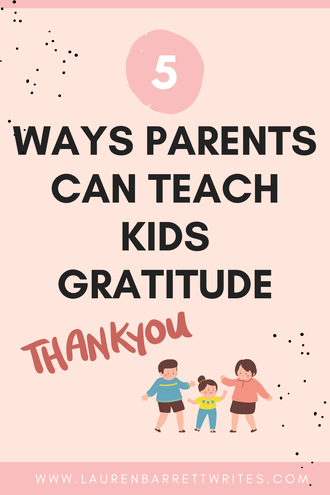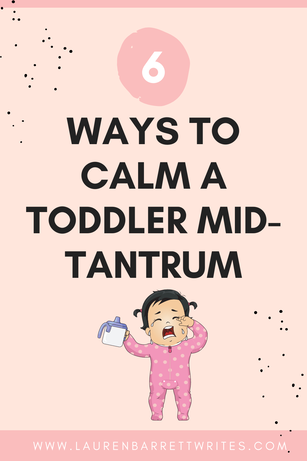|
We have all been there. Walking through Target with our toddlers in tow; everything is going well until we have to walk by the toy section.
Your toddler sees a toy he has to have. In my case, it’s a truck. My son wants it and asks for it. Very gently, I tell him that he can’t have a toy today, but it doesn’t seem to matter that I say it kindly and calmly. My son starts reaching out for the toy, whining, and then the tears begin. I can see it written all over his sad little face; he is headed straight for tantrum town. This post originally appeared on A Fine Parent. Here’s the thing about tantrums–sometimes they are absolutely unavoidable. Perhaps I warned my son prior to going into the store that we wouldn’t be getting a toy on that trip. Maybe I even told him we could get one next time; or maybe I made the point of singing his favorite song or starting a game of “I Spy†right as we rounded the toy bin aisle. Yet…the tantrum STILL happened. ​ It isn’t our job as parents to make sure our toddlers’ lives are always happy and conflict free. In fact, wanting something that they cannot have is necessary for our young ones to learn how to handle disappointment.
Why Do We Not Want to Give Into Toddler Tantrums?
​As parents, we don’t enjoy seeing our little ones sad and it’s especially unpleasant to see (and deal with) them pitching a fit. When we see our toddler upset, our tendency is to problem solve–and for toddlers, this may mean giving in to the toy or activity they are seeking.
While this might be the road to least resistance, we have to resist the innate urge to swoop in and make everything better by letting go of our boundaries when our toddler scrunches up his face and opens his mouth to let out a big wail. Not giving into these tantrums helps our toddlers with:
​ In my research, I have found 6 effective ways to calm a toddler mid-tantrum. Read on to find out what they are!
#1: Validate the Magnitude
One evening, my son was sad that his grandma had to leave to go home. He started crying uncontrollably as she tried to walk out the door. I realized at this moment that there were several ways in which I could respond to my son’s reaction. I could:
Another way to frame it that works well with my toddler is to pick two points and gradually stretch those points to be farther and farther apart. ​“Are you as sad as from the tippy-tip of your head down to your itty-bitty toe? Are you that sad? Or are you as sad as the top of the ceiling all the way down to the floor? Are you that sad? Wow! Or are you as sad from the top of the tree where the birds are all the way down to the dirt with the worms? Are you that sad? Are you as sad from way out to the sun all the way back to earth? That sad? That’s really sad!†Usually after one or two distances, my son’s tears subside as he looks at me in curiosity. He’s processing his level of sadness and before long, his tantrum is over. By validating the magnitude, we are letting our toddlers know that we are taking their feelings seriously and telling them that what they are experiencing is a big deal. The result is that our kids feel heard. ​ Another benefit, according to Dr. Becky, is that we are taking something abstract (the feeling) and making it concrete, which is less confusing to toddlers. Our toddlers feel seen and understood, and that may be all they need to calm down.
#2: You Didn’t Want That to Happen
Another strategy I learned from Dr. Becky is to emphasize how much you know your child didn’t want something (the thing they are upset about) to happen.
“Your toy broke. Wow. You didn’t want that to happen. That stinks.†The phrase “you didn’t want to happen†works so wonderfully in the moment compared to phrases like, “Next time, you need to be careful with your toys.†Think about how we feel when something bad or annoying happens to us. For example, we are rushing to load the dishwasher and grabbing too many dishes at once in our rush to load it. While unloading, we drop a dish and it shatters into a million pieces. What would we prefer our spouse say to us at that moment?
​ Our kids feel the same way. Lectures and advice can come later, when our child has calmed down. For now, during the tantrum, we can just simply say, “You didn’t want that to happen, did you?†​
#3: Use Sign Language
​Younger kids can have a hard time understanding abstract ideas and feelings. That’s where sign language comes into play.
I have started teaching my son signs for his feelings. Without a visual representation for their feelings, toddlers can be left feeling confused and frustrated by their inability to communicate the big emotions they are experiencing. This powerlessness eventually leads to a tantrum or meltdown. Research has also shown that sign language can help calm a child in a stressful situation and that children can often learn the sign for a word before the actual verbal word. My son now has a way to communicate and identify his feelings for the next time a situation arises. Instead of crying, he can say or sign that he’s sad, angry, scared, etc. I often sign the feeling in the moment in which my son or I are actually experiencing that feeling, including when my son is having a tantrum. For example, when my son is sad that TV time is over, he will often start crying and whining. I will repeatedly identify the feeling my son may be experiencing and back it up with the sign. “You are sad, sad, sad [signing the word sad over and over with exaggerated facial expressions]. It’s okay to be sad [Sign sad again]. But the dinger rang, and it’s time for bed. You can help me pick out a book to read.†​ ASL Nook, run by a Deaf family, has videos that teach kids their emotions and is a great resource for anyone wanting to learn sign language.
#4: Become a Broadcaster
I first heard of this strategy in Dr. Harvey Karp’s Happiest Toddler on the Block book. The premise behind it is to narrate and mimic your child’s emotions like a football broadcaster would do while calling a game.
Instead of immediately jumping in with our adult voice of reason (“No, I am sorry. We can’t have any TV now.â€), we can get on our child’s level and echo our kid’s feelings (Dr. Karp recommends repeating back with one-third of their level so as not to appear sarcastic or overdoing it). “TV, TV. You want TV now, now, now! You are sad! You are stomping your feet. You want TV! TV! Now. You want TV, now.†​ Doing this can stop our child’s tantrum in seconds because our toddler feels seen and heard. It may also be helpful to pair this tactic with the sign language mentioned in the previous section!
#5: Redirect
Once our child has started to settle down a bit (before they are fully recovered), we can use redirection to help them refocus on what they can do instead. Toddlers are told “no†often; so now we want to focus on the “yes.â€
Redirection can look like this: “TV time is over. But we can read THREE fun books together. Maybe some of your favorites. C’mon, you can help me pick them out.†The point is to take their minds off what they can’t have in the moment and shift to what they can do instead. Another way to redirect is to act the fool–a strategy by Dr. Karp. “TV time is over. I know that makes you sad. But can you help me with your bedtime routine? I forget how to do it. Hmm…do we first brush your toes? Do I bathe you in dirty mud? No, that can’t be right. Pleeasssseeeeee. I need your help!†​ This example of redirection will affirm how smart they are, build their confidence and instantly take their minds off wanting TV. It’s a major win for all!
#6: Magic Breaths
I have heard of Magic Breaths (slow deep breathing) from a few places, including Dr. Karp’s book and the children’s show Daniel Tiger. My son and I practice magic breaths every night before bed, when my son is calm and focused. The point is to teach them in a calm moment so they can be used successfully during a tantrum.
When my son is having a tantrum and I get the feeling that he wants to hit or throw something, I will take his hand and place it by the top of his head. I will say “Magic Breath†and together we will take a deep breath, as I move his hand slightly lower. We will do this four times until his hand returns back to its normal position. ​ As our children get older, we can move from doing Magic Breaths with our children to reminding them about Magic Breaths when we sense their anger rising. In education, we call this shift the gradual release of responsibility; the purpose being to move from modeling, to reminding, to being able to do independently without prompting. Magic Breaths can always be part of our child’s toolkit, even as they grow older.
With these 6 strategies, we can breathe a sigh of relief the next time our toddler has the inevitable tantrum. Instead of feeling helpless and out of control like our toddlers, we have research-based, proven to work strategies that will calm the meltdown.
The next time your toddler starts gearing up for a breakdown, run through this list and find one that works for you and your toddler. ​ You got this!
Learn 60+ more strategies like these ones in my parenting guide, Now What? ​
The 2-Minute Action Plan for Fine Parents
​ Here are some questions to contemplate as you take a few minutes to assess how you currently react to your toddler’s tantrums:
The Ongoing Action Plan for Fine Parents As you move forward in seeking how best to use tantrums as an opportunity for your child to grow and learn, it may be helpful to assess where you are now so you can compare it to where you will be! Here is one helpful way to monitor long-term progress:
0 Comments
Leave a Reply. |
Categories
All
|
Proudly powered by Weebly





 RSS Feed
RSS Feed